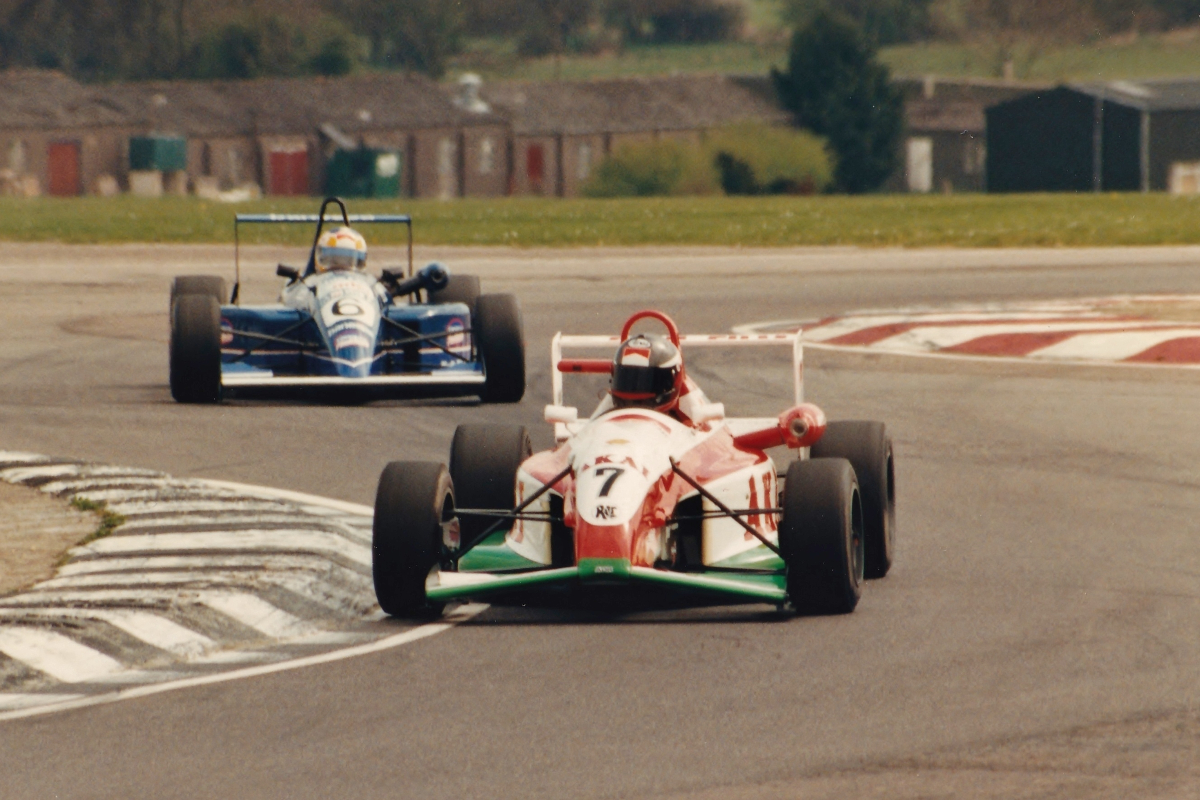
Photos: Roger Gascoigne
30 years ago, Marcel Albers lost his life in a British F3 race at Thruxton. Roger Gascoigne talked to some of those who knew him best to look back on the career of a modest, likeable, passionate and gifted racer
Motorsport in the Netherlands is currently enjoying an unprecedented boom in popularity. The nation can boast the reigning Formula and Formula E world champions, and circuit grandstands the world over are an expanse of orange.
Thirty years ago today, the world tragically lost another young Dutch driver, Marcel Albers, who stood on the verge of huge success in the sport.
Coming into round three of the 1992 British Formula 3 season at Thruxton, the 24-year-old Alan Docking Racing (ADR) driver was trailing Paul Stewart Racing-run title rival Gil de Ferran by four points, the pair taking a win apiece in the first two races.
Trying to make up lost places on lap eight of the race after an earlier incident, Albers clipped the rear of team-mate Elton Julian’s car on the run up to the chicane, pitching his Ralt RT36 into a terrifying somersault. What followed was horrific, as the airborne car flew into the spectator debris fencing. The driver sat inside it had no chance.
Albers, nine days short of turning 25, succumbed to injuries sustained as the car – and his head – impacted the fencing.
Team owner Alan Docking has no doubts that Albers would have taken the title that year.
“He was odds-on to win the championship, there’s no question about that. In 1992 the main players were de Ferran and Kelvin Burt, a class driver, but Marcel had the measure of both of them. As we were evolving the car, I was 100% sure that he was on to win the championship,” Docking tells Formula Scout.
With Albers having provided precise feedback, the team had clearly got on top of the tricky new Ralt.
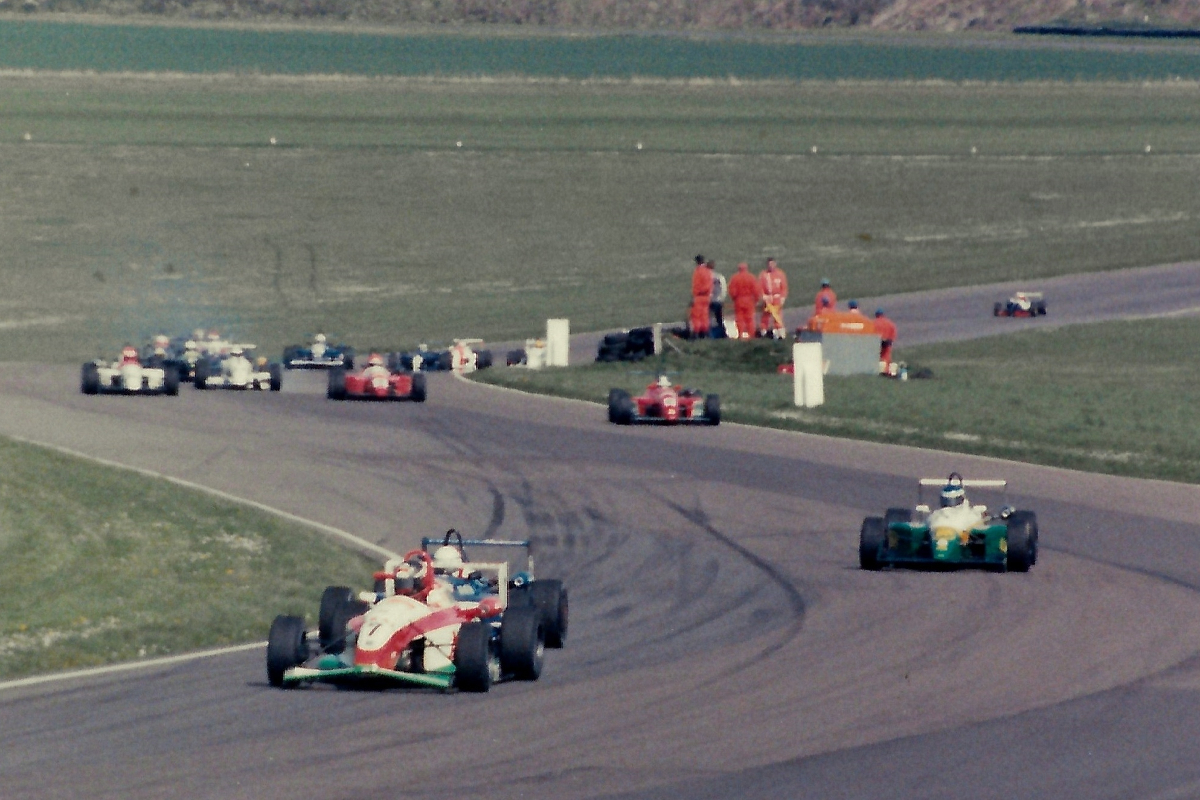
Photo: Stephen Bounds
Philippe Adams left Bowman Racing to join ADR from round six, winning three times to finish a distant second behind de Ferran in the championship. Albers’ opening round win at Donington Park still put him 11th in the final standings.
“Philippe was not the driver that Marcel was,” says Docking. “He was a good driver, but he didn’t have the brainpower that Marcel had, the engineering capability.”
“[Marcel] started racing relatively late. He wasn’t an eight-year-old in go-karts, or as a baby or as a young fella. He first got involved with karts as a teenager,” remembers Docking.
And, as far as his father, Jacques Albers, was concerned, that would be as far as his racing career would go.
“I said to him: ‘Karting is okay. You can continue but not motor racing, not cars’. Then he came to me about a year later to ask if my thinking had changed or not and I said ‘no, it hasn’t changed’. And he said to me that he wanted to go racing cars.”
The younger Albers, still at school, told his father “So, I have to do it my way”. And what did that mean? Jacques Albers continues: “’My way’ meant money and, of course, he didn’t have that.”
But Albers had discovered that cigarette company Marlboro was sponsoring the search for new racing talents in the Netherlands through a competition, the Marlboro Challenge.
“Are there more people in that group?” Albers Sr asked of his son. “He told me that there are 15,000 applications. I thought, ‘15,000? Success! I will never hear any more about this’. But he won. He was the best of 15,000 people.”
The prize was a fully-sponsored season in Dutch Formula Ford 1600 with Van Amersfoort Racing, and Albers won the title in his first season in cars, although he lost out on the Benelux crown after a clash with rival Evan Kersbergen in the title decider at Zandvoort.
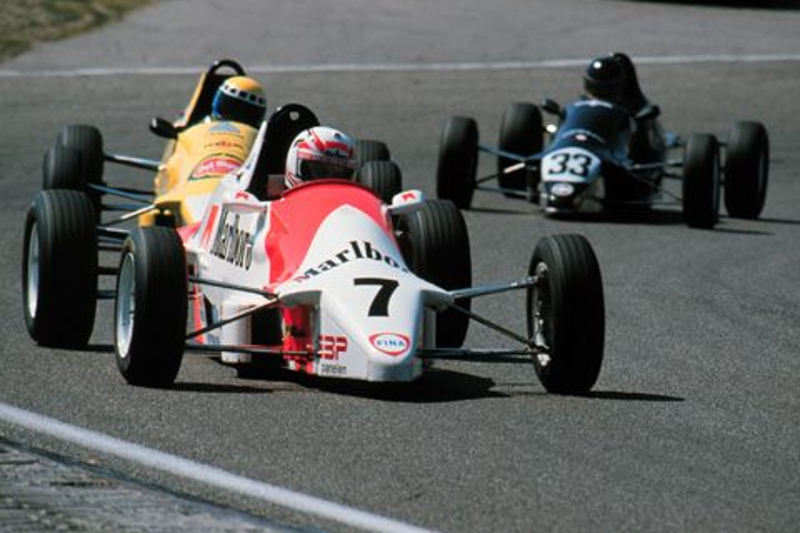
Photo: Marcel Albers Memorial Trophy
Albers was keen to step up to F3 in Britain for 1990. After testing with ADR and Eddie Jordan Racing, both teams made the same comments.
“They had no problems with his driving, he drove excellently. But from FF1600 without wings to F3 with wings was a very big step. Both suggested that he should go for one year to an in-between class before going to F3, so that was Formula Opel Lotus,” remembers Jacques Albers.
Docking, who had been running Mika Salo in F3 in 1989, was approached because he “had good contacts in Holland for many years and with Huub Rothengatter, he was my first driver out of Holland [for European Formula 2 in 1980] and so I had a bit of name there.
“I suggested that a year in FOpel Lotus would have been a good step because I knew how competitive F3 was in Britain. Not many drivers were jumping from FF1600 to F3, they were going down the FOpel route and it was a good way of going from the FF1600 category moving up, it was a safe way and they learned a lot about slicks-and-wings and things in FOpel Lotus.”
And so, for 1990 Albers joined Jan Lammers’ reigning champion team Team Lotus Nederland for the FOpel Lotus Euroseries. The opening round at Donington Park in April was only Albers’ 18th ever car race. He was against the likes of fellow FF1600 graduates Rubens Barrichello, David Coulthard and de Ferran, and the largely unknown Dutchman was simply in a class of his own at the British circuit, stunning observers with pole position and a dominant lights-to-flag victory [pictured below].
Although the rest of the season did not live up to this initial promise, he still finished a creditable sixth in the standings while Draco Racing’s Barrichello became champion. Nevertheless “that was for us a disappointment, but after all it was not so bad when you have only one year’s racing experience”, remembers Albers Sr.
Albers could now return to ADR to move up to F3 having gained some slicks-and-wings experience in the spec FOpel. His father recalls that “the first year [in British F3] with ADR was very difficult because of the very big difference even to FOpel”.
 With hindsight, it is apparent just how strong that 1991 British F3 field was, bringing together an outstanding group of young drivers, many destined for honours in their later careers. Albers renewed his FOpel rivalry with Barrichello, Coulthard and de Ferran, as well as Jordi Gene, Rickard Rydell and Olivier Beretta.
With hindsight, it is apparent just how strong that 1991 British F3 field was, bringing together an outstanding group of young drivers, many destined for honours in their later careers. Albers renewed his FOpel rivalry with Barrichello, Coulthard and de Ferran, as well as Jordi Gene, Rickard Rydell and Olivier Beretta.
As Docking recounts: “He didn’t have years and years of racing experience on him when he came to England for his first year in F3. But it dawned on me recently when I was looking back at 1991 that he was in a real classy group of drivers. Quite a few of them were in their second year. He was in his first year and he finished fifth in the championship and the guys in front and behind him mostly went into F1.
“He came in as an underdog, for sure, and he was up there amongst it. It was quite incredible really. His team-mate Hideki Noda, who was in his second year, was behind him in the championship, so he gathered the circuit knowledge, the car knowledge, what was needed in it very, very quickly and got on with it.”
Albers benefited from input from recent F3 race-winner Derek Higgins, who had joined ADR as team manager.
“[Higgins] was a listening post for Marcel, they could talk and chat about handling or track issues or whatever the driver might come across. He was a big fan of Marcel’s because Marcel would listen, talk and take on board things that he would suggest.”
Barrichello beat Coulthard to the title with victory in the final round at Thruxton. He was driving a Ralt RT35, the last chasis to be designed by team founder and owner, the legendary Ron Tauranac. De Ferran’s three wins that year had also demonstrated the potential of the Reynard 913, while Rydell won the season opener in the TOM’S 031F.
For 1992 Ralt brought in Andy Thorby, designer of that car, to build its radically different new chassis, the RT36.
Fearing that the tide had turned, leading teams West Surrey Racing and Paul Stewart Racing swapped to Reynard, leaving ADR as the only team fielding the new Ralt from the start of the season.
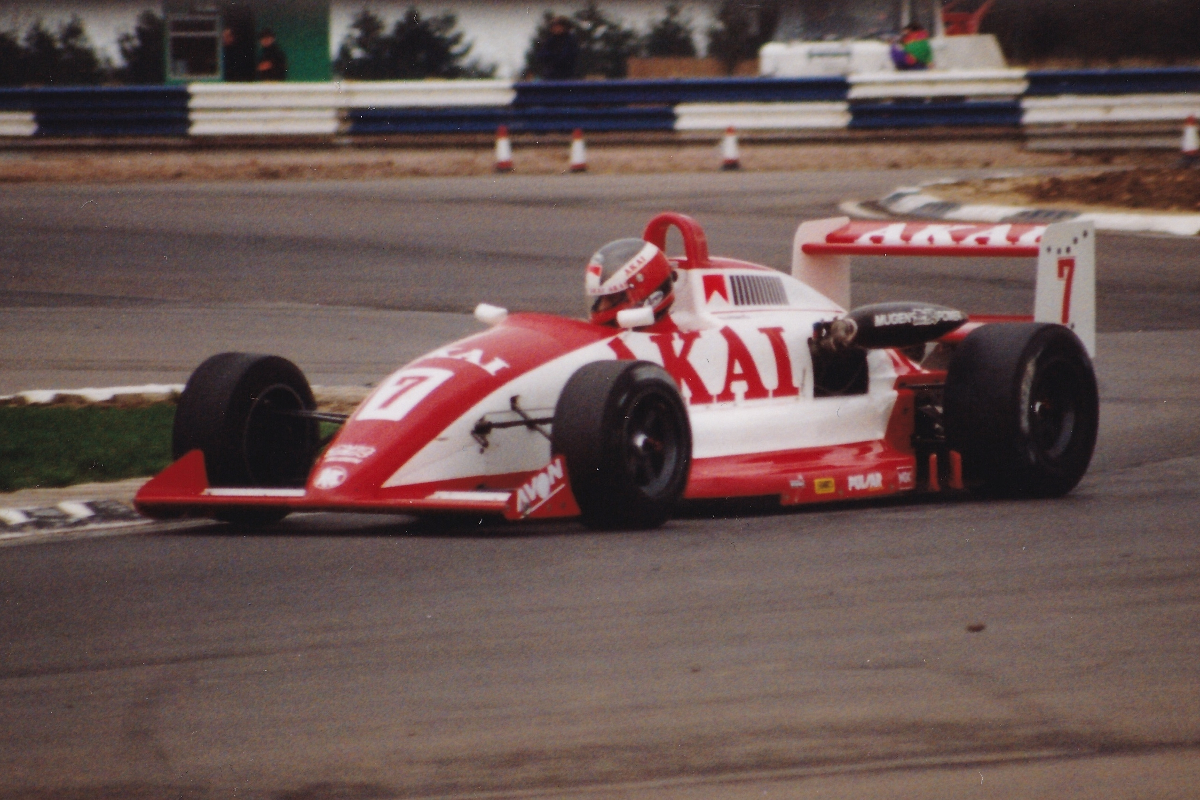
Albers in 1991
“It was a carbon composite chassis where the previous one was an aluminium honeycomb construction, so we had to learn a little bit about the new car, to develop it as we went,” says Docking. “It arrived a little late so there was a bit of work that we couldn’t do in the early days of February, but we got up to speed and won the first race of the championship at Donington.”
In a repeat of his FOpel success two years previously, Albers took pole and victory first time out, although he had to overhaul WSR’s faster-starting Oswaldo Negri to do so.
“The designer, with tears in his eyes, came to me to say ‘thank you very much’,” Albers Sr adds. “And he said ‘without Marcel it would never have been a success’ because Marcel had a feeling with the car and could tell what could be improved. Normally that takes one or two seasons, but Marcel and the team did it in a few months in the winter break.”
In round two at Silverstone, Albers started from the front row alongside de Ferran. Albers was reeling in the Stewart driver, setting fastest lap in the process, before an engine problem forced him into the pits and retirement.
The teams arrived at Thruxton’s traditional Easter Monday meeting with the title already looking like a straight fight between de Ferran and Albers. The two dominated qualifying, almost half a second ahead of third-placed Mikke van Hool.
De Ferran beat Albers to pole and off the line, but as the field raced up to the chicane at the end of lap one, Albers swept past into the lead. Then an off somewhere around the back of the circuit on lap three dropped him down to seventh.
Docking believes that “he had a coming together with somebody on that early lap and damaged the front left endplate of the wing, nudging the wing around, losing him a bit of aerodynamic balance”.
On the fateful eighth lap, he had dropped a further place behind team-mate Julian. As he tried to reclaim the position on the run up the hill to the Club chicane, disaster struck.
 “He was coming up to pass Elton and he rubbed his front-left wheel on Julian’s rear-right wheel. That was the cause of it all. Obviously, you can see that he would have been slipstreaming him all the way to get a little bit of an advantage and he pulled out,” remembers Docking of that fateful moment.
“He was coming up to pass Elton and he rubbed his front-left wheel on Julian’s rear-right wheel. That was the cause of it all. Obviously, you can see that he would have been slipstreaming him all the way to get a little bit of an advantage and he pulled out,” remembers Docking of that fateful moment.
“I don’t know whether Elton lifted to accommodate his team-mate. There are lot of things that happened that went on there that we’ll never know. It was unusual. I’ve got a funny feeling that Elton probably spotted him in his mirrors or knew he was going to have a go and probably lifted a little bit. I don’t think it was anything irregular. I think he was just giving him some space.”
In addition to the funeral held afterwards near the family home outside Antwerp in Belgium, a memorial service was held in Silverstone, where Albers had been living for one-and-a-half years.
“And it was a full church,” Docking recalls. “That was just the impact he had on the local community, the people, the racing people and it’s just fascinating how well he was received in a period of a little bit more than 12 months.”
Albers had initially lodged in bed-and-breakfast accommodation near the team’s Silverstone base, before finding his own place in nearby Brackley. “The people he was boarding with just loved him,” says Docking.
“He stayed with them for three or four or five months, but the couple from the B&B were at his funeral in Holland and the fact that he had that much of an impact on them and that was 12 months earlier. But he kept in touch with folk and he was just very, very liked.”
His father remembers the love for Marcel in the Silverstone community.
“[The church service was] mainly for the racing people but also the ladies from the supermarket, the butcher, the man from the pub where they sometimes went. Marcel lived one-and-a-half years in England, and everybody liked him, but he just didn’t change in spite of the successes he had, he didn’t change. He was always Marcel as before.”
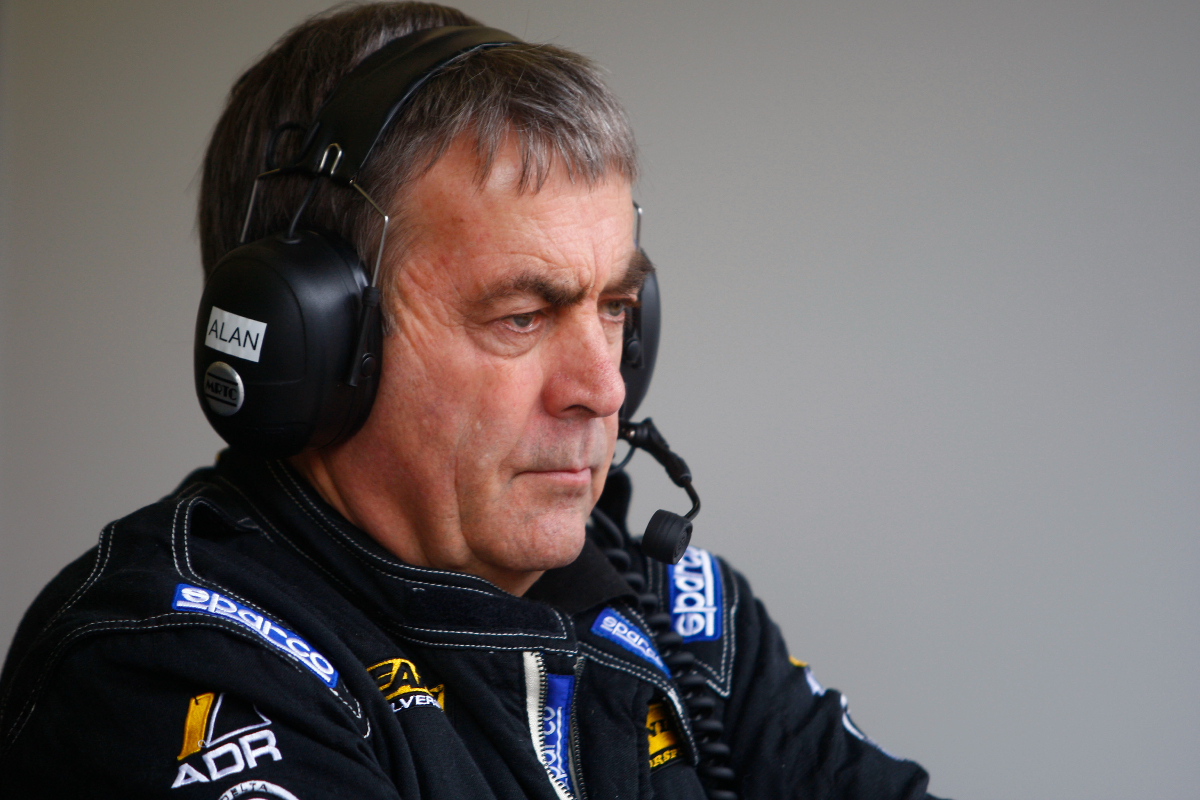 Docking and all his mechanics and engineers were devastated. “It was absolutely dreadful – the shock, the horror and missing a fantastic bloke. We arranged a bus and around 50 of us travelled to his funeral in Holland and that was team personnel, engineers, even some of the opposition teams came over with us.”
Docking and all his mechanics and engineers were devastated. “It was absolutely dreadful – the shock, the horror and missing a fantastic bloke. We arranged a bus and around 50 of us travelled to his funeral in Holland and that was team personnel, engineers, even some of the opposition teams came over with us.”
How far could Albers have gone within the sport? Docking is certain that he would have gone on to reach the top level: “I was a huge fan of Marcel’s. I was very sure he was going places.
“I think he would have gone through to F1. The family couldn’t afford to get him all the way to F1 but I’m sure that there were enough F1 teams around in those days where he would have got opportunities. There were F1 engineers that I knew at the time who were interested in his progress, who were keen.”
When Albers had been told to get slicks-and-wings experience in FOpel, ADR had run Salo in British F3 for a second season and rivalled WSR’s eventual champion Mika Hakkinen. Docking could see that “Marcel was matching [Salo’s] achievements of the previous couple of years earlier, there’s no question that Marcel was on course you might say”.
Those that knew him speak of Albers’ great feel for a racing car. “He felt every single thing that was not good and could also tell what they had to change,” notes Jacques Albers.
Docking concurs: “He was technically very interested in the racing, the car, the design, what made it work, the technicalities of getting a car to handle to his liking and all those things, and extremely honest, and that worked out with his engineering of a race car. He had a pretty sharp mind for it. He was keen, asked questions, wanted to know. He worked hard in the cockpit as well. But it was enjoyable for him, he never looked spooked by it.”
“He was a pretty natural driver. He must have been to achieve what he did in such a short period of time, I think. It was easy for him.”
Marcel Albers’ CV
Car racing
1992: 11th in British F3 (1 win, 1 pole, 1 fastest lap)
1991: 3rd in Masters of F3, 5th in British F3 (1 FL), 14th in Macau GP
1990: 6th in FOpel Lotus Euroseries (1 W, 1 P, 1 FL), 6th in FOpel Lotus Germany, 14th in EDFA Nations Cup
1989: Dutch FF1600 champion
Karting
1983-’88: Racing in the Netherlands
“[Off-track, he] was very well rounded, he was polite, he was everything, he was probably too nice to be a racing driver in some ways”, says Docking, clearly still emotional 30 years on. “You couldn’t get a nicer chap in every way.
“Personality-wise he was just 10 out of 10; driving-wise the same. He was committed to racing – that’s all he wanted.”
He continues: “You never saw him [always] at pubs or bars or clubs or anything, he was just focused on the work. He spent a lot of time in here [the workshop] away from the track. He did his usual training, but he was a team man in every sense.”
A passion for classic cars runs deep in the Albers family and, when Marcel was not racing, he kept himself busy at home and abroad by restoring old Fiat 600s. He even used some ADR expertise on one example.
“Over the winter, when he was at home, he continued working away at a complete restoration. He brought it over here and drove it around, it had a slightly bigger engine than the 600cc engine and we made a little radiator for it to help its cooling and he drove it around in the UK.”
At the time of his death, he had started working on another in his father’s barn. After many years, the car has come back to Docking who finally hopes to complete the car’s restoration, three decades on.
Docking has guided many top drivers in his long career in the sport including Mark Webber, Stefan Johansson and Salo. “I’ve had such a wonderful bunch of drivers over the years and they’re all characters, one way or another. They all had special bits about them, you might say, but Marcel was genuine. He was just such a nice all-rounder.”
His father proudly points out: “Marcel had time for everybody, he didn’t feel like a champion or so; many other people on the circuit were kind of gods, or they felt so. He was just Marcel as he always was.”
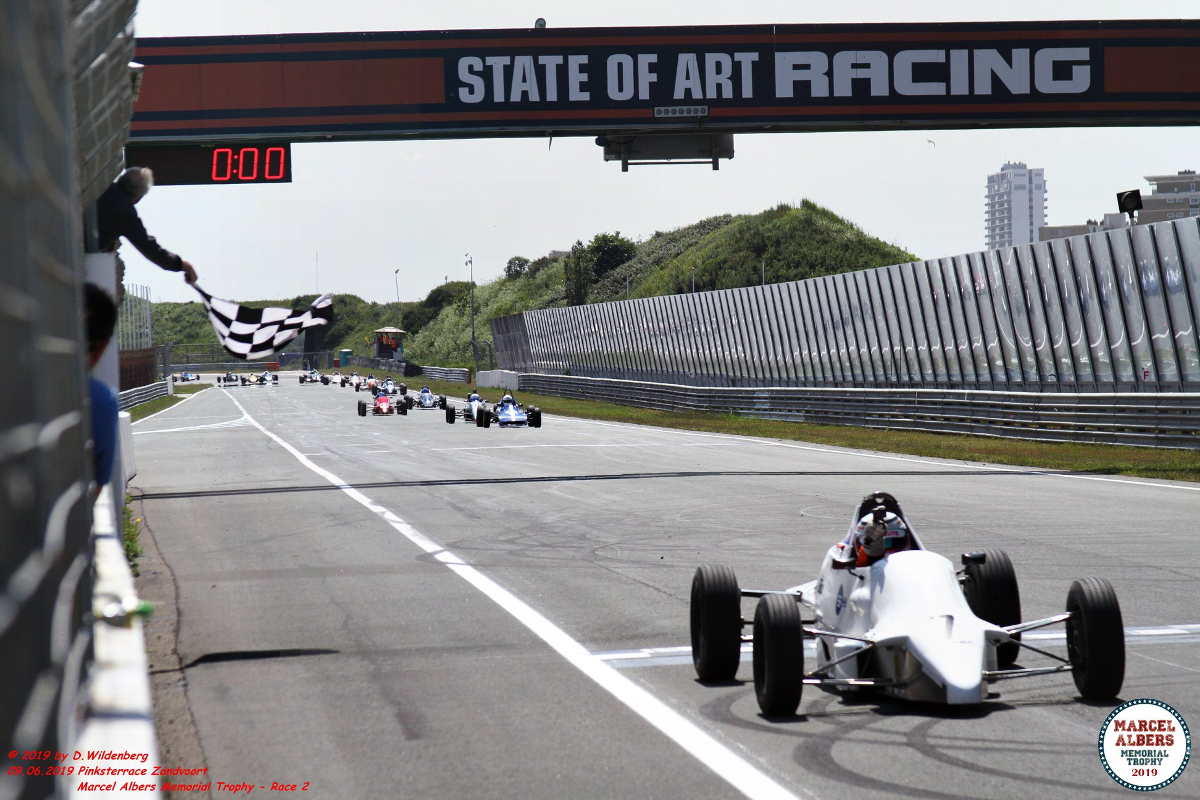 After his son’s death, Jacques Albers “got a condolence letter from somebody at Silverstone called Brian, with no address or family name”. He found out that Brian was a gatekeeper at Silverstone. “I went to thank him for the lovely letter, introduced myself and he started crying and told me how he missed him. Alan Docking told me that Marcel was drinking tea with Brian in his small cabin. He used to stop and talk to him every morning on his way into the circuit.”
After his son’s death, Jacques Albers “got a condolence letter from somebody at Silverstone called Brian, with no address or family name”. He found out that Brian was a gatekeeper at Silverstone. “I went to thank him for the lovely letter, introduced myself and he started crying and told me how he missed him. Alan Docking told me that Marcel was drinking tea with Brian in his small cabin. He used to stop and talk to him every morning on his way into the circuit.”
Marcel Albers is far from forgotten. Every year Zandvoort hosts a FF1600 event called the Marcel Albers Memorial Trophy – “when I see how enthusiastic they are about organising that every year that feels so good for me,” says his father.
The family plans to make this year’s event, to be held on June 4/5, into a special occasion in honour of the 30th anniversary of his death. As Albers explains: “Every year only the winner gets a prize but this year I want to give everybody a prize.”
In addition, there is a statue in his honour at the circuit entrance, as well as the Marcel-Albers-Street inside.
And Jacques operates his own small museum near Antwerp to commemorate his deeply missed son, with trophies, souvenirs and memorabilia from his career.
The saddest stories in motorsport are often the tales of careers tragically cut short. We will never know what Marcel Albers could have achieved. But we can appreciate the lasting impression that he left with those who knew him or just had the pleasure of watching him do what he loved, driving racing cars.